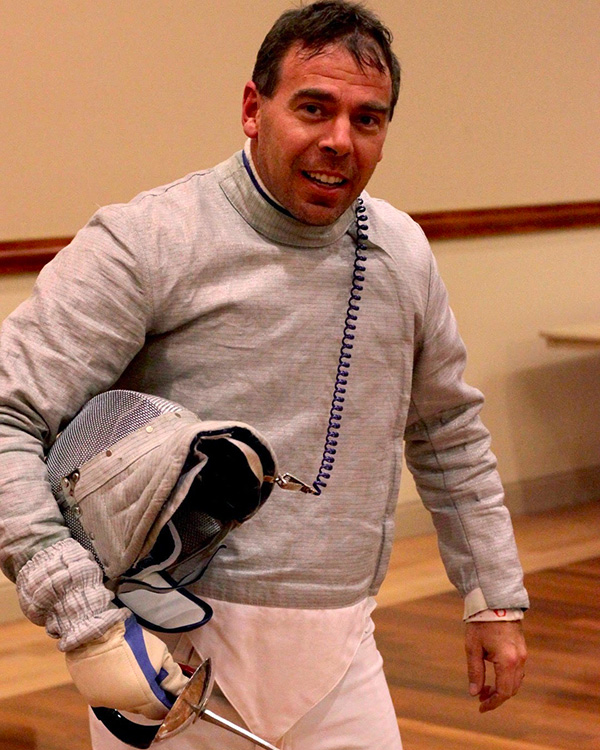
Photo courtesy of Paul Erickson
Fencing Work
Paul Erickson, a professor of mechanical and aerospace engineering at UC Davis, decided to try out fencing classes when his 10-year-old son expressed interest in the sport.
Even though his son found it to be only mildly interesting, fencing turned into an entertaining hobby for Erickson. The COVID-19 pandemic and other factors have hindered the amount of time that he can dedicate to fencing, but Erickson said he continues to have a great deal of respect for the sport.
“Fencing is a lot like boxing without the brain damage,” Erickson joked. “You’re protected, but you still get a huge adrenaline rush when you see someone lunging at you with a sword.”
According to Erickson, fencing is split into three disciplines based on the name of the sword used: foil, sabre and epee. Each discipline has its own rules and strategies. When fencing foil, for example, only a hit on the torso or back will score a point. When fencing epee on the other hand, the entire body is fair game.
Erickson fenced all three weapons, but gravitated the most toward sabre. In this event, a hit on any part of the upper body will score a point.
“The weapon a person fences has a lot to do with their personality,” Erickson remarked. “People who are really patient may be more drawn to epee, whereas someone who wants to rush and get points would fence sabre or foil.”
When asked about what he enjoyed the most about fencing, he commented on work-life balance, and how the fast nature of the sport distracts him from life’s stressors.
“I might be worried about my kid or work or other things, but when someone is literally attacking me with a sword, I’m not thinking about that,” Erickson said. “It’s like chess at 90 miles per hour, and it certainly gets your mind off of work.”









